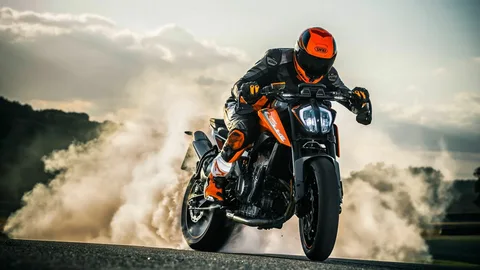The Thrill of Motorcycles: A Deep Dive into Riding Culture and Innovation

Motorcycles are more than just a mode of transportation; they represent freedom, adventure, and a unique culture that captivates enthusiasts around the world. From their historical roots to modern innovations, motorcycles have evolved significantly, influencing both personal mobility and lifestyle. This article explores the history, types, benefits, and culture surrounding motorcycles.
A Brief History of Motorcycles
The origins of motorcycles can be traced back to the late 19th century, when inventors began experimenting with motorized bicycles. The first true motorcycle is often credited to German engineer Gottlieb Daimler, who built a motorized bicycle in 1885. As technology progressed, motorcycles became more powerful and popular, particularly in the early 20th century, with companies like Harley-Davidson and Indian Motors establishing themselves as iconic American brands.
The post-World War II era saw a surge in motorcycle popularity, especially in the United States and Europe, as returning soldiers sought freedom on two wheels. The 1960s and 1970s brought further innovation with the introduction of high-performance bikes, leading to the emergence of a distinct motorcycle culture.
Types of Motorcycles
Motorcycles come in various types, each designed for specific purposes and riding styles:
-
Cruisers: Known for their low seat height and relaxed riding position, cruisers are ideal for leisurely rides. Brands like Harley-Davidson and Indian dominate this category.
-
Sport Bikes: Built for speed and agility, sport bikes feature aerodynamic designs and powerful engines. They are popular among thrill-seekers and those who enjoy track racing.
-
Touring Bikes: Designed for long-distance travel, touring bikes offer comfort and storage. They often come equipped with features like saddlebags, comfortable seating, and advanced electronics.
-
Adventure Bikes (ADV): Combining off-road capability with on-road comfort, adventure bikes are versatile and ideal for riders who enjoy exploring varied terrains.
-
Dirt Bikes: Lightweight and rugged, dirt bikes are designed for off-road use. They feature knobby tires and suspension systems tailored for rough trails.
-
Electric Motorcycles: A growing segment, electric motorcycles offer an eco-friendly alternative with lower maintenance costs. Brands like Zero Motorcycles and Harley-Davidson's LiveWire are leading the charge.
Benefits of Riding Motorcycles
-
Cost Efficiency: Motorcycles generally consume less fuel than cars, making them a more economical choice for transportation. They also have lower insurance premiums in many cases.
-
Agility and Parking: Motorcycles can navigate through traffic more easily and require less parking space, making them practical in urban settings.
-
Sense of Freedom: Riding a motorcycle offers an exhilarating sense of freedom and adventure. Many riders cherish the open road and the connection with their surroundings.
-
Community and Camaraderie: The motorcycle community is known for its camaraderie. Events, rallies, and group rides foster connections among enthusiasts, creating a sense of belonging.
-
Skill Development: Riding a motorcycle requires concentration and skill, enhancing focus and coordination. Many riders find this challenge rewarding.
Motorcycle Culture
Motorcycle culture is rich and diverse, encompassing a wide range of lifestyles and communities:
-
Rider Groups and Clubs: From casual riding groups to organized clubs like the Hells Angels or the AMA (American Motorcyclist Association), these communities often have their own traditions and events.
-
Customization: Many enthusiasts enjoy customizing their bikes to reflect their personality. This can include modifications to performance, aesthetics, and comfort.
-
Motorcycle Events: Rallies and bike shows, such as Sturgis Motorcycle Rally and Daytona Bike Week, draw thousands of riders, showcasing bikes, products, and culture.
-
Influence in Media: Motorcycles have a significant presence in films, music, and literature. Iconic films like "Easy Rider" and shows like "Sons of Anarchy" have romanticized the biker lifestyle.
-
Safety and Awareness: With the thrill of riding comes the need for safety. Many organizations promote rider education and awareness to reduce accidents and improve safety on the road.
Conclusion
Motorcycles embody a unique blend of freedom, adventure, and community. As they continue to evolve with advancements in technology and changing societal trends, they remain a beloved choice for many. Whether you’re a seasoned rider or someone considering their first bike, the world of motorcycles offers an exhilarating experience filled with passion, creativity, and a deep connection to the open road. Embracing this culture means not only enjoying the ride but also understanding its rich history and the bond it creates among riders.
- Arts
- Business
- Computers
- Oyunlar
- Health
- Home
- Kids and Teens
- Money
- News
- Recreation
- Reference
- Regional
- Science
- Shopping
- Society
- Sports
- Бизнес
- Деньги
- Дом
- Досуг
- Здоровье
- Игры
- Искусство
- Источники информации
- Компьютеры
- Наука
- Новости и СМИ
- Общество
- Покупки
- Спорт
- Страны и регионы
- World


